 1929: Maybach Type 12
1929: Maybach Type 12
All of eight years had passed since the presentation of the six-cylinder W 3 model when Maybach launched the brand’s first twelve-cylinder model in late 1929 – a sensation in the German car market. The Type 12 was powered by a 150 hp (112 kW) V12 engine with a displacement of seven litres. The cylinder banks were angled at 60 degrees. Experience from airship engine construction also entered into the design of the V12.
Maybach advertised the new model, whose radiator self-assuredly carried a gold-wreathed “12” under the double-M emblem, as a “premium class car”. However, Karl Maybach made only a few changes to the chassis of the new top-of-the-line model compared with its predecessor. The chief difference was that the 12 was slung a little lower, lending it a stretched look.
The marketing men positioned the Maybach twelve-cylinder car as an absolute top model for corporate directors and high-ranking political figures. Opulently equipped by the technology standards of the day, the car also had a price tag that matched the positioning – on a level with that of the large supercharged cars from Mercedes-Benz.
1930: Zeppelins for the road
One year after the presentation of the first V12 model, Maybach created another highlight in this segment. The Maybach Zeppelin DS 7 (Double Six, refers to the engine design), with bodywork fitted, was a luxury car that weighed around three tons and had a top speed of up to 150 km/h. Its designers emphasised performance and comfort. An example of this was the double overdrive transmission with suction pressure shift device – a remarkably ergonomic method of changing gears for that era.
The name Zeppelin stood for the airships of Count Zeppelin and thus simultaneously for top-flight German technology of world renown. Maybach deliberately chose this name for the top models of his Maybach vehicle range. It testifies to his skill in the marketing of a brand, but also to the confidence of an engineer in his own designs.
In addition to the seven-litre car, the name of the airship graced a second model built from 1930 onwards: the engine of the Maybach Zeppelin DS 8 had its displacement enlarged to 7922 cubic centimetres and developed a spectacular 200 hp (149 kW). From 1938 on it was also available with a seven-speed manual transmission whose gears were pre-selected on the steering wheel and engaged by actuating the clutch pedal.
Other exciting automobiles originated on the basis of the Zeppelin chassis, such as the streamlined Zeppelin DS 8 bodied by Spohn and shown by Maybach at the Berlin Motor Show in 1933. In all, around 200 twelve-cylinder cars were built – Type 12 (1929 to 1931), Zeppelin DS 7 (1930 to 1933) and Zeppelin DS 8 (1930 to 1939).
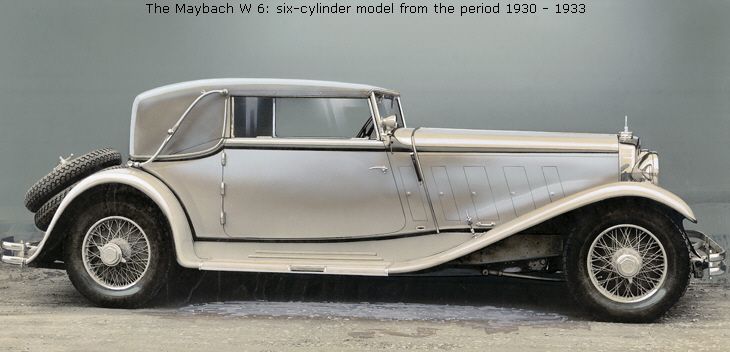
1931: Maybach W 6 model
Along with the top-of-the-range 12-cylinder Type 12, in 1931 Maybach brought out a touring car largely similar to the Type 12 on the outside and powered by the proven W 5 six-cylinder engine. This W 6 model was built until 1933, when it was replaced by the
W 6 DSG with double overdrive transmission (1934-1935). Altogether Maybach produced around 100 units of the two models.
The DSH model was based on a more advanced concept. The acronym stood for “Double Six Half” – the name moved it closer to the V12 engines – and represented a newly developed six-cylinder engine. The 5.2-litre power plant delivered 130 hp
(97 kW) at 3200 rpm and was fitted with a double overdrive transmission. About 40 units of this car were built from 1934 to 1937.
1935: The swing-axle car era begins
Whereas the design of the DSH made it a relative of the cars of the previous years, with the SW 35 model (1935) Maybach inaugurated a new era in the short history of this car brand. The swing axle (SW) car with independent wheel suspension was powered by the newly developed HL 35 3.5-litre six-cylinder engine, which delivered 140 hp
(104 kW) at 4500 rpm.
The SW 38, launched in 1936 and built until 1939, offered the same advanced suspension concept. Maybach claimed an output of 140 hp (104 kW) for its HL 38 engine, which now had a displacement of 3.8 litres. But the six-cylinder could also burn fuel of lesser quality without compromising performance.
Finally, from 1940 to 1941 Maybach manufactured the swing-axle SW 42 model. This featured a 140-hp six-cylinder engine, whose displacement meanwhile had increased to 4.2 litres. Among the 900 or so vehicles of the SW family, with their bodies made by different coachbuilders, two SW 42 cars stand out: after the Second World War these imposing one-offs were furnished with modern three-box bodies and served as company cars for the top management of Maybach-Motorenbau GmbH.

Luxury car with the majestic-sounding name “Zeppelin”
In his constant quest to preserve the technical superiority of his brand, Karl Maybach starts work on a twelve-cylinder car engine towards the end of the 1920s. The positive experience gained from using the multi-cylinder powerplants in airships spurs him on. Development is completed in 1929 with the unveiling of the Maybach “Type 12” featuring a 150-hp seven-litre V12 engine. This is the precursor to the legendary Maybach “Zeppelin” DS 7 launched in mid-1930, which is fitted with the same powerplant and a twin overdrive transmission. The DS 8 variant comes out in 1931, drawing a peak output of 200 hp from its displacement of eight litres.
The “Zeppelin” is available as a saloon, sports cabriolet and open-top touring car. All variants offered boundless interior space to relax in, whilst the comfortable leather seats are more like club armchairs with their soft upholstery. The on-road performance of this top-of-the-line car is equally impressive. It has a long 3735-millimetre wheelbase and is very heavy, but rigid axles connected to long semi-elliptic springs allowed it to glide along almost nimbly. Hydraulic, double-acting shock absorbers further enhance the ride comfort. To move off, drivers still need the clutch, but thereafter they only have to operate two small levers in the middle of the steering wheel in order to change through the four gears of the planetary-gear transmission – without having to use the clutch. Neutral, 1a or reverse can be engaged using the pre-selection hand lever in the centre of the car.
The worm-and-nut steering, which is not power assisted, is surprisingly light given the 3-ton weight of this rather grand car. The massive drum brakes are operated by cable, and offer even and effective deceleration thanks to a sophisticated lever system. A vacuum-powered assistance system keeps the power required to operate the brakes within reasonable limits. In short, the “Zeppelin” represents the ultimate in motorised luxury. The same has to be said though of the Saloon’s price tag of up to 36,000 marks, enough to buy three detached houses at the start of the 1930s.
Wilhelm Maybach is still alive to see the celebrated flagship model take shape, but does not survive to witness the car’s launch. He passes away in December 1929. A total of only 183 units are sold of the legendary “Zeppelin” in its DS 7 and DS 8 versions.
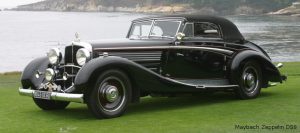 Unrivalled driving pleasure in the “Zeppelin”
Unrivalled driving pleasure in the “Zeppelin”
Captivating styling and precision, coupled with ground-breaking innovations, were attributes shared by the two most desirable German luxury cars of the 1930s: the large Mercedes 770 and the Maybach “Zeppelin”. In January 1930, the magazine “Motor” described the “Zeppelin” in glowing terms: “It is an imposing, powerful and majestic car, which doesn’t overstate its inherent luxury. This car has always embodied the greatest feeling of prosperity and beautifully crafted comfort.”
That was the aim of Dr. Karl Maybach. Indeed, he’d already shed light on his vision in the pages of “Motor” in December 1925: “When you’re building a first-class large touring car, the top priority is to cultivate a certain quality and to ensure that all the parts of the vehicle sit together in beautiful and comfortable harmony. As well as top-quality workmanship, every part and major element of this car, such as its steering, engine smoothness, carbu rettor, brake system, noise insulation and operational reliability has to be explored and developed to the fullest degree.
The “Zeppelin” was available as a saloon, sports cabriolet and open-top touring car. All variants offered boundless interior space to relax in, whilst the comfortable leather seats were more like club armchairs with their soft upholstery. The driving characteristics of his top-of-the-line car were equally impressive. It had a long 3735-millimetre wheelbase and was very heavy, but rigid axles connected to long semi-elliptic springs allowed it to glide along almost nimbly. Hydraulic, double-acting shock absorbers further enhanced the ride comfort.
To move off, drivers still needed the clutch, but thereafter they only had to operate two small levers in the middle of the steering wheel in order to change through the four gears of the epicyclic transmission – without using the clutch. Neutral, 1a or reverse could be engaged using the pre-selection hand lever in the centre of the car.
The worm-and-nut steering – not power assisted – was amazingly light given the 3-ton weight of this rather grand car. The massive drum brakes were operated by cable, but offered even and effective deceleration thanks to a sophisticated lever system. A vacuum-powered assistance system kept the power required to operate the brakes within limits.
The instrument panel in the “Zeppelin” was well equipped. There was a kilometre counter, speedometer, fuel gauge for the 135-litre tank, eight-day clock, coolant temperature display, oil-pressure gauge, vacuum gauge for the power-assisted brakes, starter injection mechanism, starter press-button, manual throttle and choke valve activator, and instrument illumination. Other items of standard equipment included two spare wheels, horn, headlamps, stopping and reversing lights, taillights, four integrated jacks (one per wheel) and a small pump to inflate the tyres.
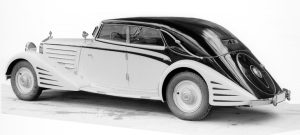
Replacement parts came as standard
In those days, factories and workshops authorised by Maybach were few and far between in Germany, Europe or further afield, and chauffeurs and drivers were no strangers to maintaining their distinguished cars themselves. For that reason, the Maybach factory delivered each chassis with a comprehensive maintenance pack, containing 45 top-quality tools and 15 replacement parts – from valves to light bulbs – plus a selection of smaller parts. This allowed the driver to carry out regularly-occurring maintenance and overhaul jobs without needing to visit a workshop. Furthermore, precise instructions even meant that faults could be cleared up and larger repairs to the engine, suspension, wheels, exhaust and electrics carried out with ease.
The heartbeat of the Maybach “Zeppelin” was provided by the twelve-cylinder engine inspired by an airship power unit. The engine was available with displacement of 6922 or 7922 cc. Both versions were extremely impressive, developing a majestic 150 or 200 hp, at 2800 or 3200 revs per minute. The engine was smoothness personified.
Wilhelm Maybach was still alive to see the legendary “Zeppelin” flagship model take shape, but did not survive to witness the car’s launch. He passed away in December 1929.
Only 66 registrations a year
Their sophisticated construction and luxurious trimmings gave Maybach a timeless desirability. It was a combination which didn’t come cheap, and this secured the luxury car a particularly exclusive image. According to statistics from 1 May 1931, of the 56,039 new passenger cars registered in Germany the previous year, only 66 were Maybach models. A total of only 183 units were sold of the legendary “Zeppelin” in its DS 7 and DS 8 versions (DS stands for double-six, two banks of six cylinders).
The production figures for the “Big Mercedes” were equally manageable: Daimler-Benz built 119 units of the W 07 between September 1930 and June 1938.
Another characteristic that the Maybach and Mercedes luxury cars had in common was their durability – some were a daily sight on the roads up until the late 1960s. Indeed, of the Maybach cars produced up to 1941 – approximately 1800 – one in twelve – that’s 152 cars in all – still exists today.
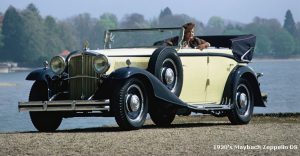 High-society customers
High-society customers
For politicians and businessmen, princesses and emperors, stars and popular idols, Maybach cars were a means of transportation to befit their station. Among the Maybach enthusiasts were famous names like the tenor Enrico Caruso and world heavyweight boxing champion Max Schmeling. Then there were illustrious figureheads, decorated with titles of nobility, who also had themselves chauffeured around in a Maybach, notably the emperor of Ethiopia, Haile Selassi, King Paul of Greece and the heirs to the Dutch throne, Princess Juliana and Prince Bernard, Fürst Esterhazy and the Indian Maharajas of Jaipur, Potila and Kolhapur. Of course, the Maybach customer list also included prominent figures in industry and high finance, including Werner von Siemens and Privy Councillor Robert Bosch.
The end of the Maybach era did not prove to be the death knoll for the luxury car class in Germany. Initially, the Mercedes-Benz 300 filled the vacuum. Then, in 1964, the Mercedes-Benz 600 arrived to take over the mantle of the exclusive prestige limousine – a car on a similar plane to the Maybach designed for people how had “arrived”, for royalty and statesmen. In production until 1981, it was a worthy successor to the “Big Mercedes” and also, in spirit, to the Maybach “Zeppelin”.
First high-speed tests with the streamlined Maybach in 1939
In the 1920s, the sales managers at Fulda Reifen, known at that time as Gummiwerke Fulda, were quite sure that the brand’s image should not be communicated in isolation from the end-product that stands on four tires.
Consequently, they bought a bus, had it converted into a luxury coach and as of 1925, presented Fulda’s new patented Parabel tire all over Germany and the neighboring countries. The first of a long series of special models was born.
Whether advertising vehicles equipped with record players and loudspeakers, the tail section shaped like huge tires, standing in front of the Reichstag in Berlin (1931), whether as a tire test streamlined bus with special license for speeds over 140 km/h (1961), or as a show truck series (from 1985) to demonstrate the respective latest high-tech truck tire generation – in all chapters of the Fulda company history there have been Fulda special vehicles.
The most challenging technical commission to produce a special model in the first half of the company’s history with the simultaneous mysterious conclusion was awarded by Fulda in 1938. The starting point was the rapid development in automotive design in the 1930s which, due to the increasingly refined aerodynamic automobiles, permitted higher and higher speeds. In addition, the construction of the “Autobahn” provided motorists with the opportunity to travel further at higher speeds.
That was a challenge to the tire industry. Bernd J. Hoffmann, Managing Director of Fulda Reifen comments: “My pragmatic predecessors did not hesitate long: At Dörr & Schreck, a renowned vehicle-maker in Frankfurt, they commissioned the construction of a vehicle for tire tests. Precondition for this order was the assurance of the manufacturer that the vehicle could regularly make high-speed tests at more than 200 km/h.”
Dörr & Schreck accepted the order and looked for the absolute leading cooperation partner in automobile manufacturing at that time: Maybach Motorenbau. Together and with the help of the well-known aerodynamic specialist, Freiherr Reinhard Koenig Fachsenfeld, they designed a three-seater streamlined car on the basis of a Maybach SW 38 chassis. The Fulda coupé with its two-color paint job and pontoon form had a long extended tail section sloping to the rear. From a bird’s eye-view the overall line looked like a rectangle with rounded edges. The rear wheel arches were completely panelled, as was the underbody, even the door handles were partly recessed.
To reach the speed of over 200 km/h demanded by Fulda, the technicians installed a 6-cylinder engine with 140 hp. The exceptionally low air resistance coefficient of 0.25 (a figure of 0.6 was usual at that time for series-produced vehicles), also helped guarantee this speed. The precondition was, however, that the chassis did not exceed a weight of 1,600 kg.
On 27 July 1939, Dörr & Schreck finally announced the completion of the SW 38: “The car is extremely interesting and beautiful. It lies well on the road and the streamlined shape already makes itself felt at 60 km/h. Soon afterwards the car was delivered, but as a result of the outbreak of war its use was soon to be very limited. During the chaos of war the test vehicle disappeared and was never found again – its whereabouts remain a mystery to this day.
Looking back, it seems that the Fulda managers at that time could not foresee two future developments: the imminent outbreak of war, which practically prevented the use of the coupé and the emotional avalanche that the streamlined car triggered off several management generations later at Fulda Reifen.
Gallery

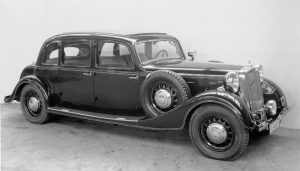




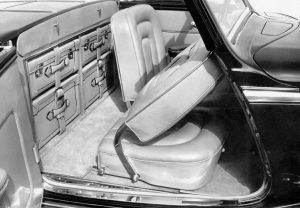

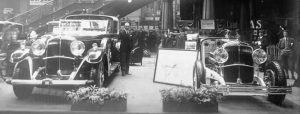

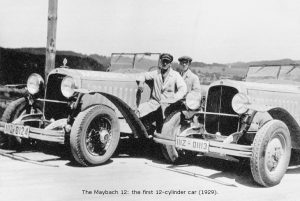

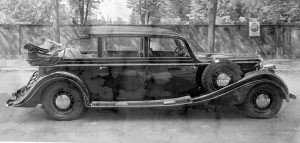

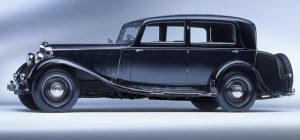
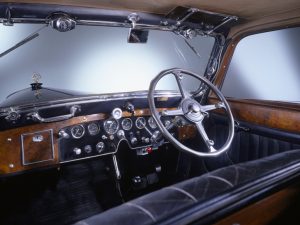



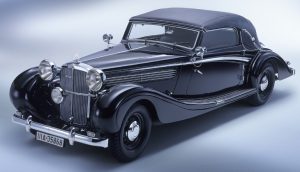


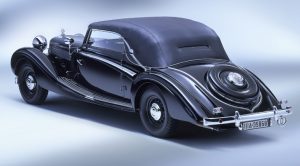
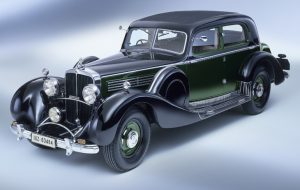
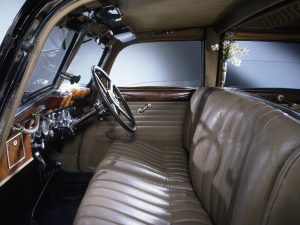
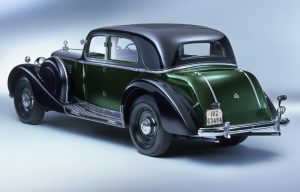
You must be logged in to post a comment.